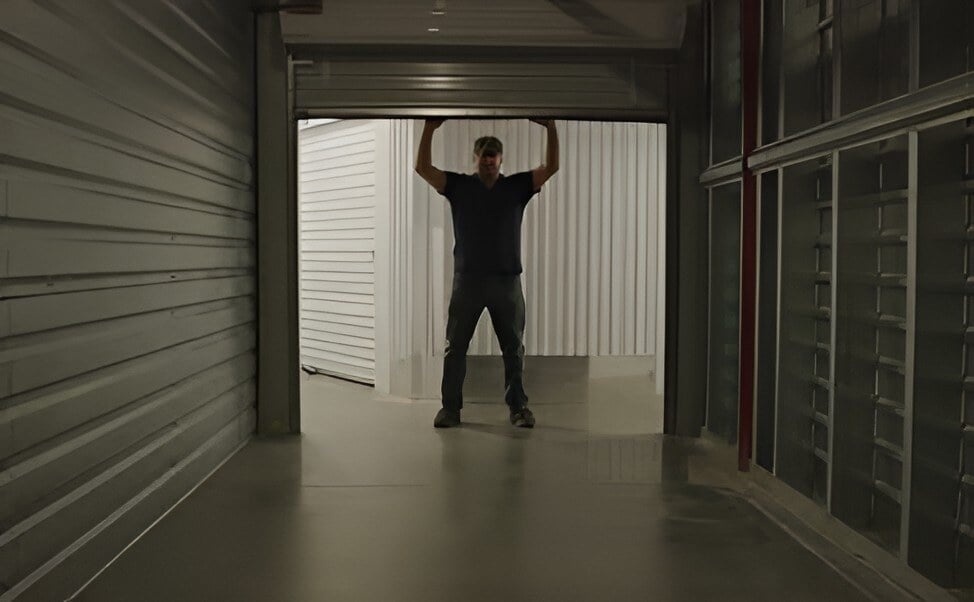The Evolution Of Self-Storage: A Partner In The Story of Mankind
In the annals of human history, the concept of self-storage has woven a continuous thread across civilizations and epochs, starting under the pyramids of ancient Egypt to the bustling ports of the Pirates of the Caribbean era, from the vast plains of North America to the sophisticated civilizations of ancient China. It is a tale of ingenuity, necessity, and adaptation, where the need to safeguard belongings, resources, and cultural heritage has driven innovation and evolution.
As we embark on a journey through time, exploring the vast history of self-storage, we uncover a story rich in diversity and complexity. From nomadic tribes to imperial soldiers, from merchants to rulers, the utilization of storage solutions has left its mark on human civilization. Yet, as we stand on the cusp of the future, the self-storage industry continues to evolve, embracing modern technologies, sustainable practices, and innovative approaches. Join us as we reach into the depths of history and uncover the past, present, and future of self-storage.
Storage In Ancient Egypt
 In ancient Egypt, while the pharaohs and nobility constructed elaborate tombs for their treasures, ordinary citizens, who called themselves the “rematch en Kermet,” or the people of the black land, derived from the Nile’s fertile black soil, used less sophisticated methods of self-storage. With limited space in their homes, everyday Egyptians turned to other solutions to safeguard their belongings.
In ancient Egypt, while the pharaohs and nobility constructed elaborate tombs for their treasures, ordinary citizens, who called themselves the “rematch en Kermet,” or the people of the black land, derived from the Nile’s fertile black soil, used less sophisticated methods of self-storage. With limited space in their homes, everyday Egyptians turned to other solutions to safeguard their belongings.
Clay pots became a common choice for storage among the populace, providing a practical and affordable solution for housing clothes, trinkets, and other essentials. However, as homes lacked the capacity to store massive quantities of goods, enterprising merchants emerged to meet this need.
These merchants offered storage services to the community, utilizing caves and ancient grain storage bins as makeshift warehouses. Archaeological discoveries have revealed the remnants of these storage facilities, displaying how large clay pots were stacked within them. There is even evidence of payment methods on ancient papyrus scripts.
This early form of self-storage allowed ordinary Egyptians to securely store their possessions, freeing up space in their homes and ensuring the preservation of their goods. While crude by modern standards, these ancient storage methods reflect the resourcefulness and practicality of ancient Egyptian society.
Ancient China Takes To The Earth
 One notable example of ancient Chinese self-storage is in the use of underground storage pits or cellars. These pits, dug into the earth and lined with materials such as wood or clay, provided a secure and cool environment for storing foodstuffs, grains, and other perishable goods. The underground nature of these storage pits helped regulate temperature and humidity, ensuring the preservation of their contents over extended periods. Perhaps these pits were the first truly climate-controlled storage.
One notable example of ancient Chinese self-storage is in the use of underground storage pits or cellars. These pits, dug into the earth and lined with materials such as wood or clay, provided a secure and cool environment for storing foodstuffs, grains, and other perishable goods. The underground nature of these storage pits helped regulate temperature and humidity, ensuring the preservation of their contents over extended periods. Perhaps these pits were the first truly climate-controlled storage.
Moreover, in urban centers and along trade routes, ancient Chinese merchants and traders utilized warehouses to store goods awaiting transportation or sale. These warehouses, often located near marketplaces or docks, served as hubs for commerce and storage, facilitating the movement of goods across the vast expanse of the empire and along the Silk Road.
Additionally, the wealthy and noble classes in ancient China constructed elaborate estates with dedicated storage rooms or chambers. These rooms housed valuables such as artwork, textiles, and ceremonial objects, reflecting the status and wealth of their owners. Intricate locking mechanisms and hidden compartments were sometimes employed to enhance security and deter theft. Even then, technology in the storage industry was necessary.
Furthermore, travelers and pilgrims in ancient China relied on innkeepers and roadside establishments to store their belongings while journeying across the empire. These temporary storage facilities provided a haven for travelers to store their luggage and valuables, allowing them to explore or rest without the burden of carrying their possessions.
Overall, the history of self-storage in ancient China reveals a supreme understanding of organization, security, and preservation. From underground storage pits to warehouse facilities and estate chambers, ancient Chinese employed a variety of methods to safeguard their belongings, reflecting the ingenuity of their society.
Treasure Chests Vs. Storage Rooms
 In the turbulent era of piracy, the buccaneers created imaginative methods to safeguard their plunder while they roamed the high seas. Among their crude yet effective strategies were a primitive form of self-storage, leveraging the bustling trade hubs of pirate havens like Tortuga and Port Royal.
In the turbulent era of piracy, the buccaneers created imaginative methods to safeguard their plunder while they roamed the high seas. Among their crude yet effective strategies were a primitive form of self-storage, leveraging the bustling trade hubs of pirate havens like Tortuga and Port Royal.
These notorious settlements served as more than just dens of debauchery; they doubled as makeshift warehouses for pirate booty. Merchants operating on these islands, though wary of the lawless reputation of their clientele, found lucrative opportunities in providing storage services for the pirates’ ill-gotten gains.
Pirates would return from their plundering expeditions to offload their spoils onto these willing merchants, who gladly stored the goods securely until the rovers embarked on their next voyage. This arrangement allowed pirates to maintain a degree of flexibility, unburdened by the weight of their treasures while they prowled the seas in search of fresh prey.
However, this crude form of self-storage was not without its risks. The constant threat of raids from rival pirates or intervention by colonial authorities loomed over these pirate havens, adding an element of uncertainty to the safety of their stored goods. Nevertheless, for the daring buccaneers of the Caribbean, this arrangement proved to be a vital component of their seafaring lifestyle, enabling them to navigate the treacherous waters of piracy with a degree of logistical finesse.
British Turn Storage Into Thriving Business
 In the tumultuous times of the 16th and 17th centuries, soldiers and sailors in Great Britain faced the challenge of safeguarding their personal belongings while away at sea or engaged in warfare. In response to this need, a form of self-storage emerged to cater to the transient nature of military life. Taken from a retired sailor who inherited a factory, remembering the Pirates of the Caribbean and how they stashed their goods, he found the inspiration for a new business venture, which was the earliest form of modern self-storage on record. He created stalls where sailors and soldiers abroad expanding Britain’s colonial empire could store their goods while away at sea or war.
In the tumultuous times of the 16th and 17th centuries, soldiers and sailors in Great Britain faced the challenge of safeguarding their personal belongings while away at sea or engaged in warfare. In response to this need, a form of self-storage emerged to cater to the transient nature of military life. Taken from a retired sailor who inherited a factory, remembering the Pirates of the Caribbean and how they stashed their goods, he found the inspiration for a new business venture, which was the earliest form of modern self-storage on record. He created stalls where sailors and soldiers abroad expanding Britain’s colonial empire could store their goods while away at sea or war.
Upon entrusting their goods to this type of establishment, soldiers and sailors would pay a fee for the duration of their absence, akin to a modern storage rental arrangement. This fee ensured the safekeeping of their belongings until their return.
This system of self-storage not only provided practical solutions for military personnel but also contributed to the development of early commercial enterprises catering to the needs of transient populations. It exemplifies the adaptive nature of commerce in response to the challenges of historical circumstances.
Modern Self-Storage Emerges
 The modern self-storage industry in the United States traces its roots back to the post-World War II era, a time marked by significant societal and economic changes. The surge in suburbanization and the rise of consumer culture created a demand for storage solutions among the burgeoning middle class.
The modern self-storage industry in the United States traces its roots back to the post-World War II era, a time marked by significant societal and economic changes. The surge in suburbanization and the rise of consumer culture created a demand for storage solutions among the burgeoning middle class.
In the late 1950s and early 1960s, the first self-storage facilities began to emerge in the U.S. These early facilities, often consisting of simple garage-like units, catered to individuals and businesses needing extra space to store belongings, inventory, or equipment.
However, it was in the 1970s that the self-storage industry experienced significant growth and evolution. Entrepreneurial pioneers such as Russ Williams and Bob Munn saw the potential in providing purpose-built storage facilities equipped with various unit sizes and modern security features. They recognized the changing lifestyles and needs of Americans, particularly the increasing mobility and desire for temporary storage solutions.
The self-storage business model gained traction as more investors recognized its profitability and resilience to economic fluctuations. By the 1980s, self-storage facilities had become a common sight across the country, offering convenience and flexibility to individuals, families, and businesses alike.
The industry continued to evolve with advancements in technology, security, and facility design. Today, the self-storage sector in the United States is a multibillion-dollar industry, comprising thousands of facilities nationwide. It serves as a testament to the enterprising spirit and innovative thinking that shaped the modern self-storage business into what it is today.
The Future Of Self-Storage
Looking into the future, the landscape of self-storage is poised for a significant evolution driven by technological advancements, changing consumer behaviors and environmental considerations. Here is a glimpse of what self-storage may look like in the future:
Smart Storage Solutions - With the proliferation of Internet of Things (IoT) technology, self-storage facilities will become increasingly interconnected and intelligent. Smart sensors embedded in storage units will provide real-time data on temperature, humidity, and security, ensuring optimal conditions for stored items. Customers will have access to digital platforms that offer remote monitoring and management of their storage units, enhancing convenience and peace of mind.
Customizable Spaces - Future self-storage facilities will offer more flexibility and customization options to meet diverse customer needs. Modular storage units that can be adjusted in size and configuration will allow for efficient utilization of space. Customers will have the ability to customize their storage units with shelving, climate-control systems, and other amenities tailored to their specific requirements.
Eco-Friendly Practices - Sustainability will be a key focus in future self-storage facilities. Green building practices, renewable energy sources, and eco-friendly materials will be incorporated into facility design and operations to minimize environmental impact. Additionally, innovative storage solutions that promote recycling, reuse, and waste reduction will be implemented to support sustainability goals.
Virtual Storage Solutions - Advances in digital storage technologies may lead to the development of virtual storage solutions that complement physical storage facilities. Cloud-based storage platforms and digital asset management systems will provide alternative storage options for digital files, documents, and media, reducing the need for physical space while enhancing accessibility and organization.
Integrated Services - Future self-storage facilities may offer integrated services beyond traditional storage solutions. Value-added services such as on-demand pickup and delivery, packing and moving assistance, and inventory management services will be offered to streamline the storage process and enhance customer experience.
Community Spaces - Self-storage facilities of the future may serve as multifunctional community hubs, offering shared workspaces, meeting rooms, and recreational areas. By fostering a sense of community and collaboration, these facilities will become more than just storage spaces but vibrant social hubs that enrich the lives of their users.
Overall, the future of self-storage is characterized by innovation, sustainability, and
enhanced customer experience. As technology continues to advance and consumer preferences evolve, self-storage facilities will adapt to meet the changing needs of society while embracing new opportunities for growth and improvement.
What A Road We Have Traveled
As we conclude our trip through the halls of self-storage past, present, and future, we are left with an appreciation for its enduring significance in shaping our world. From the simple storage methods of ancient civilizations to the sophisticated facilities of the modern era, the rise of self-storage reflects our human drive to preserve, protect, and organize our possessions and heritage.
However, our journey does not end here. As we gaze toward the horizon of the future, we recognize that the story of self-storage is far from over. In an ever-changing world characterized by technological advancements, shifting demographics, and environmental challenges, the self-storage industry continues to adapt and evolve.
Looking ahead, we envision a future where self-storage moves beyond traditional boundaries, embracing sustainable practices, digital technologies, and community-centric approaches—a future where storage solutions are not merely spaces to house belongings but hubs to move beyond our earthly scope.
Who knows, one day we may have storage ships that move our goods to planets far beyond our modern reach. Whatever it is, and wherever we go next, you can rest assured self-storage will move along with human ambitions just as it has for thousands of years.
–
Kevin Harless is the development director with Storage Authority Franchise (www.StorageAuthorityFranchise.com). He is a resident of Dallas, Texas, where he has spent the last fifteen years of his career in self-storage construction, management, and acquisition. He can be reached at kevin@storageauthority.com to answer your self-storage franchising and development questions.
More Content
Popular Posts
Recent Posts
In April 1984, the first non-stop commercial...
Raise your hand if you’ve ever made plans,...
Everyone knows it: Investing in real estate...
They say when one door closes, another one...
Like its name implies, Surprise, Ariz., a...
Self-storage has become as reliant on the...
Having a strong online presence is...
Social media and search engine...












